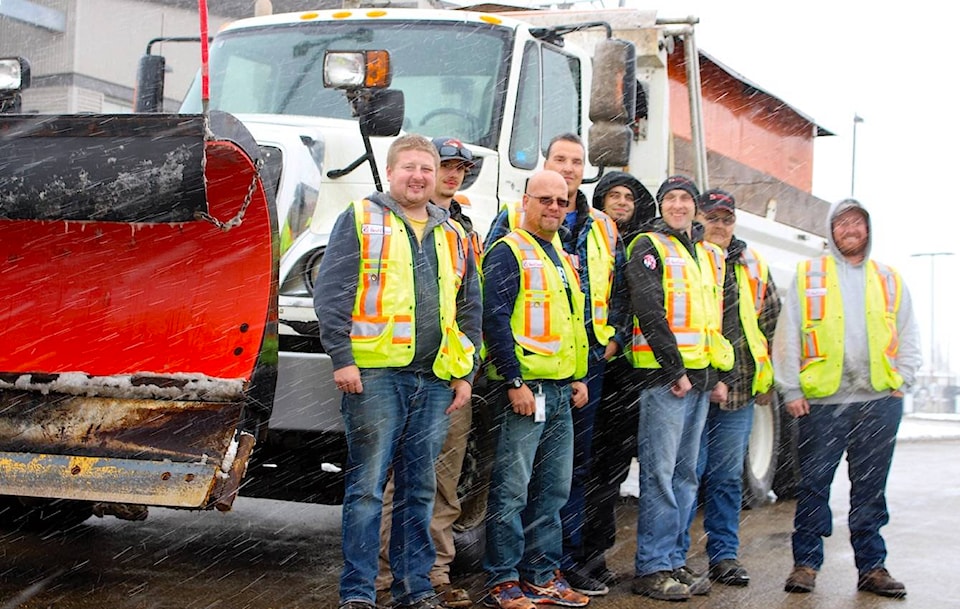City of Red Deer road-plowing crews are ready for winter — and at their disposal are some of the de-icing compounds recently banned by the City of Edmonton.
When unsafe quantities of calcium chloride and its corrosive inhibitor were found in the stormwater system of Alberta’s capital, Edmonton city council voted to stop using the crystalline salt compound for de-icing.
The same problems are not anticipated for Red Deer, said city public works manager Greg Sikora — even though calcium chloride and its corrosive inhibitor are found in Road Guard, a solution used to make local roads safer when temperatures hit between -14 and -20 C.
Sikora said city crews use this proprietary product very sparingly — “only as much as is necessary.”
It’s used only under certain conditions, he added, and according to the manufacturer’s instructions, which passed Canadian safety standards.
The City of Red Deer hasn’t tested its stormwater system for calcium chloride, which can harm aquatic river life. But Sikora said chemical testing was done on snow that was cleared from roads and trucked to city public works yards, and the calcium chloride level was found within acceptable levels.
He added he would be open to testing run-off or stormwater, “if it could be done in a safe and controlled way.”
City of Red Deer public works crews use a mixture of sand with minimal salt on icy roads when temperatures are between zero and about -12 C.
Since the sand/salt mixture stops being effective at that point, “we have many tools in our toolbox,” said Sikora.
And one of them is Road Guard, which is applied to icy streets when the air temperature is between -12 and -20 C.
Whenever temperatures plunge below -20 C — as they did for many stretches last winter — nothing really works as a de-icing agent, said Sikora, so “we don’t use sodium or calcium when it gets below -20.”
Red Deer hasn’t yet been hit with the 20- to 30-centimetre snowfalls that have blanketed Calgary, Banff and southern Alberta — but it will.
“Whenever people ask if we’re prepared for (the first big snowfall)… I just like to answer, ‘We’re ready. Winter is not a surprise to us,’” said Sikora.
Up to 14,000 tonnes of sand sits in the public works yard to be used for road de-icing. Sikora said last year’s extra-cold conditions meant only about 4,500 tonnes was used.
The city’s 13 snow plows and six graders have been ready to go since late September, he added. Contractors are also hired annually to contribute to the snow-clearing effort.
This winter, about $5.3 million has been budgeted for plowing, slightly more than last year, said Sikora.
Highest priority for clearing are bridges and arterial roads. Neighbourhood plowing is done according to a schedule that changes slightly every winter.
Sikora said the first residential area that was plowed last winter will go to the end of the list this winter.
He encourages city residents to sign up for the ALERT system that gives advance notifications of snow plowing routes. It can be done on the city’s website, www.reddeer.ca.
lmichelin@reddeeradvocate.com
Like us on Facebook and follow us on Twitter
